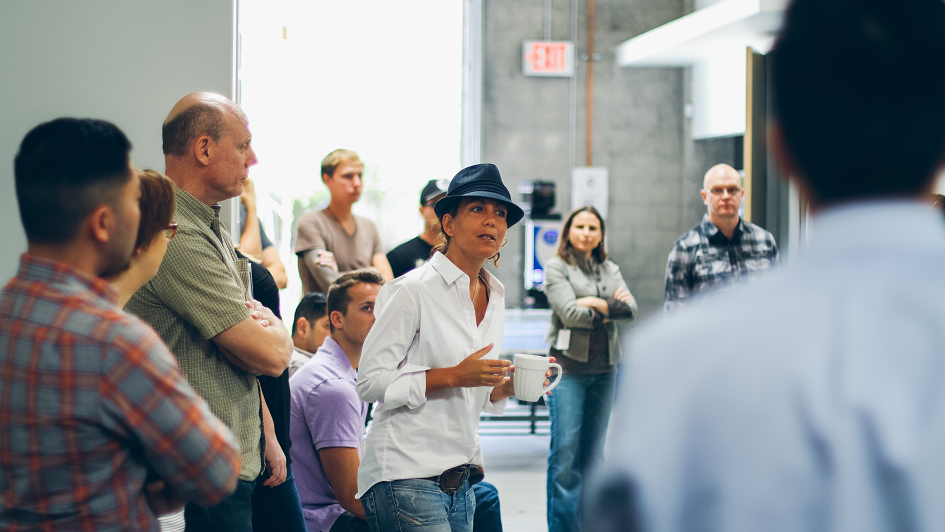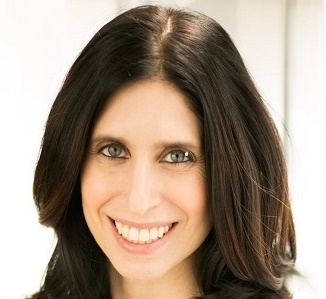
Many leaders have clearly missed the point when it comes to diversity. In fact, it’s probably the most misunderstood cultural point for an organization — which, subsequently, makes it the most difficult change agent to harness. The power is there, but the comprehension? Not so much.

Some, however, are getting incredibly close and setting the tone…
Alyssa Altman (vice president and managing director for SapientNitro North America) managed to achieve something that all leaders wish they could: Create a team that is diverse, yet cohesive — and we wanted to know how. As a representative of “diversity” herself (I say “‘diversity'” because, let’s be serious, female integration and leadership should appear normal to all of us), Alyssa managed to introduce multiple points of view into one group that she calls “The Growth Ensemble” — which may seem pretty generic at first glance, but once you hear the full interview, you’ll walk away with a logical understanding as to why it fits.
Here, we offer you some themes from the interview before presenting the full video at the end. See what you can glean from Alyssa’s success blending internal diversity with a strategic purpose — both for SapientNitro’s sake and for that of its clients.
Fearlessness
Alyssa describes a situation in which diversity nurtures a culture that in turn nurtures fearlessness. This means that no one is afraid to step outside of comfortable teams and teammates to go and get new guys/gals that might be able to do the job better — or simply bring something different to the table. Rather than having a culture that is more of a systematic propagation of diversity, this fearlessness allows your internal folks to continuously generate that integration themselves, which I think we can all agree will end up in more sincere and natural relationships among peers.
Purpose
You may be able to repeat “purpose is key”, but can you explain why? Alyssa does a wonderful job of this, explaining to us that when you align your teams around something that they can ultimately see, prove, and deliver, then they tend to be more involved. For example, if you choose to focus on your client’s customers and creating something for them — specifically for that persona that you know and can envision — then the work (and results) become more personal. It creates a direct bridge between your team and the end customer, the end experience. It becomes less about the employee-to-client relationship and more about the employee-to-user relationship.
“If you think [that] what you’re putting in the world is going to have an impact on someone, then that gives you more purpose and it also lines up people around what they can do together as a team.” – Alyssa Altman
All of this, in turn, has a laudable effect. It generates quality. It’s simple: If you cause each team member to become more emotionally and personally implicated in the project, then the transition from looking at only their specific role to seeing their role as part of a larger “solution” is imminent. This doesn’t just allow them to improve their contribution within the parameters of their roles, but it also moves each participant to understand and assist other team members.
All in all, it seems that diversity with a purpose-driven mindset equals a lucrative community.
Natural growth
Once you have set up your own “ensemble”, it’s the “growth” portion that remains. But this will happen naturally. As Alyssa mentions, by aligning every team member — each with his/her own background, ideals, values, and style — to the same purpose, leaders generate a sense of ownership (and entitlement to) the overall success of a project. Participants associate their feelings of individuality and belonging with the group as a whole, thereby not only pushing themselves further, but also offering their help to other teammates. It is this sense of community that brings about natural growth.
“Rather than just focusing on the work they’re doing and QA-ing their code, they’re really QA-ing the whole solution, and it’s really helping everyone to understand the full dimensions of what they’re putting out there.” – Alyssa Altman
This kind of inherent evolution is the kind that is truly sustainable, and you can be sure that clients will notice your transformation. In fact, it is the kind of cultural change — the kind of mentality shift — that can be passed along to clients, as well. By offering a team of masterful individuals propelling a unified concept, you’ll be able to deliver the same strength and core focus to your clients and their business cases.
Hear more from a leader who pulled this off herself in the full video interview below.